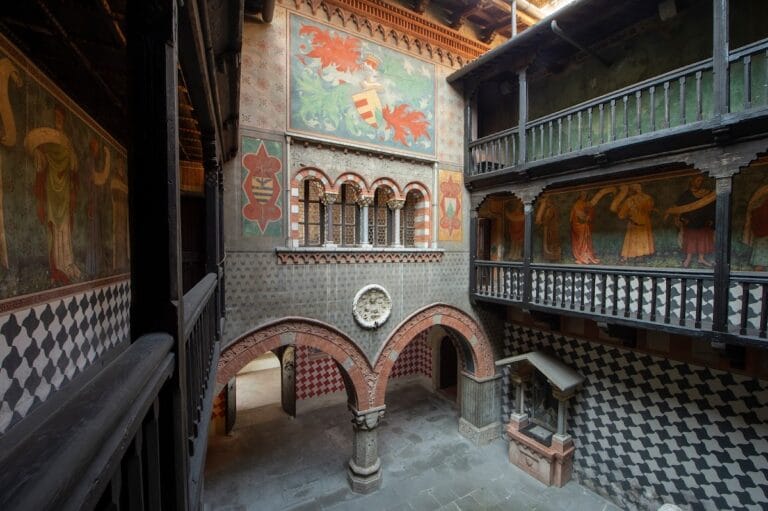Castle of Cavriana: A Medieval Fortress in Italy
Visitor Information
Google Rating: 4.5
Popularity: Low
Google Maps: View on Google Maps
Country: Italy
Civilization: Unclassified
Remains: Military
History
The Castle of Cavriana is located in the town of Cavriana in modern Italy and was built by medieval Christian forces during the 11th century. It was established as a military fortification to control the surrounding territory in the province of Mantua.
In the 14th century, the castle experienced a turbulent period marked by repeated attacks from the Visconti family of Milan, a powerful dynasty engaged in regional conflicts. During this time, Francesco I Gonzaga, lord of Mantua, undertook expansions of the castle’s structure. He also used it as a place of refuge during outbreaks of the plague. Francesco I died within the castle walls in 1407.
Later in the 15th century, Ludovico Gonzaga ordered significant strengthening of the castle’s defenses and initiated its transformation into a prominent residential complex. The well-known architect Giovanni da Padova was responsible for this work. Renowned Renaissance artists and architects, including Andrea Mantegna and Luca Fancelli, contributed decorative and architectural enhancements, reflecting the Gonzaga family’s status and cultural interests.
The castle also served as a residence for notable figures such as Isabella d’Este, a prominent Renaissance noblewoman who stayed there when her husband Francesco II Gonzaga was away from Mantua. It witnessed the deaths of several members of the Gonzaga family, including Eleonora de’ Medici in 1611 and Carlo Gonzaga in 1631, indicating its continued importance to the family over several centuries.
In the early 1600s, the fortress was partially dismantled. By around 1770, under Austrian dominion, the castle was almost entirely demolished. Its building materials were recycled for the construction of Villa Mirra, a nearby residence. In the early 21st century, specifically in 2004, efforts were made to partially restore and stabilize the remaining structures, reflecting renewed interest in preserving the site’s historical legacy.
Remains
The Castle of Cavriana was originally constructed on a strategic hill overlooking the settlement below, featuring a quadrangular layout with four corner towers. This design served both defensive and residential purposes typical of medieval fortifications in northern Italy.
Today, only fragments of the castle’s defensive walls survive, alongside a single tower that has been repurposed into a bell tower. The original materials used in the castle’s construction were later removed during its near-total dismantling in the late 18th century. These stones and bricks subsequently served as building materials for Villa Mirra, which created a tangible architectural link between the medieval fortress and later regional architecture.
The surviving wall sections and tower stand as in situ remnants of the medieval castle, providing insight into the fortress’s original scale and position. The bell tower conversion exemplifies how the remaining structure was integrated into the later fabric of the community, shifting from military use to a more peaceful, civic function.
Photographic evidence documents the condition of these remnants, showing stable but fragmentary masonry that marks the hillside where the castle once dominated the landscape. The preservation work carried out in 2004 helped to consolidate these features, ensuring their survival for historical study and cultural memory.










